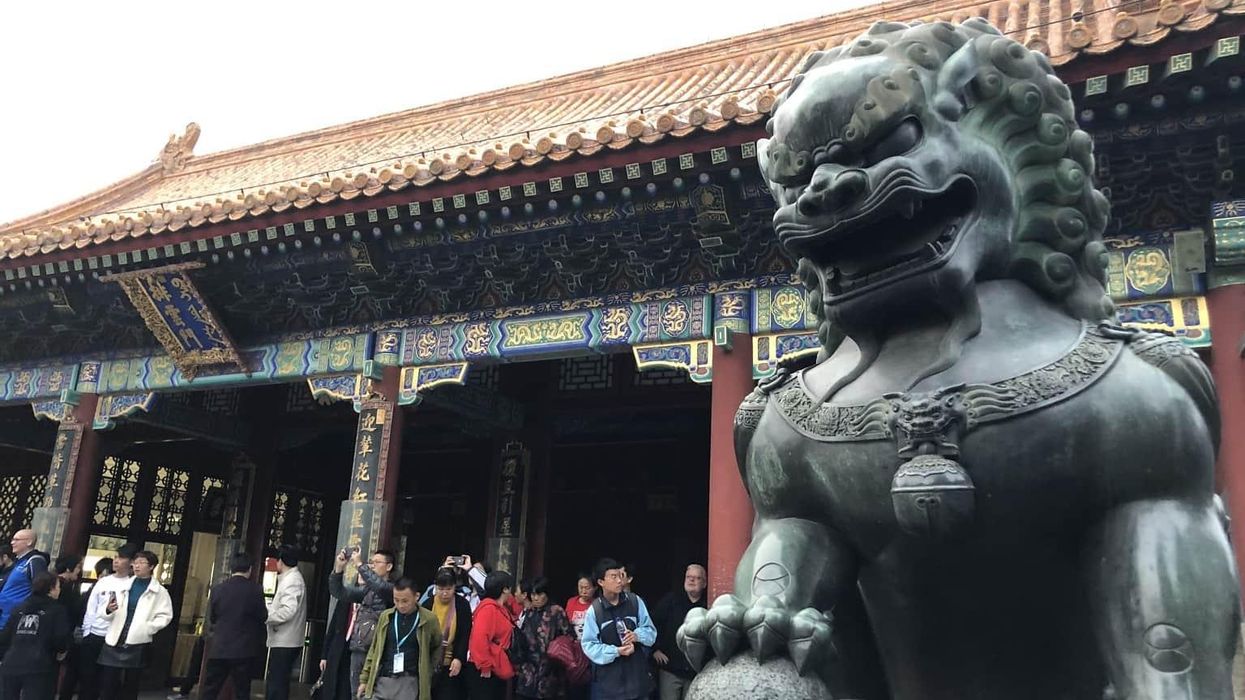The first time I saw Blackwater contractors in action was one morning in 2005 on al-Mansour street in the Iraqi capital, Baghdad. In the middle of the bridge, heavily armed contractors emerged from a vehicle driving north, blocked the traffic by pointing their machine guns in all directions, including mine, and moved what seemed to be a VIP they were presumably protecting.
They then jumped into another vehicle with tinted windows heading south, in the opposite direction. In the time between the contractors’ emergence from the first vehicle and their entry into the second, everybody on the street froze, anticipating that bullets could start flying at any moment given the gunmen’s aggressivity and menacing behavior — to the point where my driver ducked and forgot to push on the brakes, allowing his car to roll forward and hit the one ahead.
At the time, the Blackwater contractors' presence was directly linked to the U.S. administration, the Coalition Provisional Authority, which had been running Mesopotamia since the 2003 invasion.
As the highways became increasingly more dangerous for coalition forces due to insurgent attacks, it was not unusual to see an American Humvee opening fire on a civilian vehicle regardless of the official U.S. rules of engagement that were, in practice, impossible to abide by. In fact, the last Humvee in any U.S. convoy would carry a sign demanding that all vehicles remain at least 100 meters further away. It was almost impossible to read the panel from the equivalent of a football field away, which of course exposed civilians to deadly fire.
Meeting a U.S. convoy on these Baghdad (north or south) highways carried numerous difficult challenges. U.S. convoys drove at a steady average speed, even on highways. Other vehicles were not permitted to pass them. The Iraqis found a risky solution by driving on the opposite side of the thoroughfare, taking an enormous risk of collision. The worst was when another convoy was coming in the opposite direction. At that moment, all drivers froze and put their arms in the air for fear of being shot at.
During the first seven years of the U.S. occupation, the risk of being mistakenly killed was extremely high for numerous reasons. In 2007, Blackwater contractors opened fire on people at Nisour Square, killing 17 civilians and wounding 24. After years of litigation, four American mercenaries were eventually convicted in 2014 and sent to prison; that is, until President Trump pardoned them last week.
But the 2007 massacre was not even the beginning of American disregard for Iraqi lives. In 1996, U.S. Ambassador to the UN Madeleine Albright responded to the deaths of half a million Iraqi children attributed to the impact of more than five years of U.S. sanctions on the country by saying “…the price is worth it.” The 2003 invasion and the Iraq war left hundreds of thousands of Iraqis dead or wounded. In 2004, pictures from the U.S.-run prison Abu Ghraib Iraq confirmed “sadistic and criminal abuses” by American soldiers and contractors against Iraqi prisoners.
In 2010, a classified U.S. video showed an Apache helicopter attack killing a dozen Iraqi civilians, including two Reuters news staff.
Moreover, in the first year of the U.S. occupation, Paul Bremer, Washington’s viceroy, disbanded the Iraqi army, leaving 400,000 men at home without financial means or rights. Many of these men eventually enlisted in Al-Qaida in Iraq (that later metamorphosed into the “Islamic State” terror group ISIS, or Daesh). In 2009, Washington closed Camp Bucca, a U.S. detention center that had become a "jihadi university." This is where terrorist leaders recruited the men to fight and terrorize Iraq, violently taking over vast swaths of the country, including six major cities, leaving at least 20,000 dead and millions displaced from 2014 to 2017.
There was no accountability for these casualties, either directly caused by American soldiers, contractors, or coalition forces, or indirectly through the violent chain of events. One can blame in part Washington’s total lack of knowledge or respect of Iraqi culture, the lack of a viable post-occupation plan, or the weight put on domestic politics over the future of a country the United States once claimed to have “liberated.”
It shouldn’t come as a surprise to anyone that Iraqis are responding to Trump’s pardons with derision and anger. They know their lives are not cheap and demand accountability. Iraqis today are much less inclined to submit to the dominant power of U.S. forces.
In 2001, former President George W. Bush addressed the nation and asked: “Why do they hate us?” He believed it was because people in the Middle East hated “democracy and freedom.” But this is precisely what Iraqis are looking for: justice under democracy and freedom. Freedom to live and freedom to pursue criminals responsible for the human rights abuses they have committed.
After the unlawful assassination of Iraqi Hashd al-Shaabi commander Abu Mahdi al-Muhandes and Iranian Brigadier General Qassem Soleimani almost exactly one year ago, the Iraqi parliament enacted binding legislation ordering all U.S. forces to leave the country. After January, there will still be 2,500 U.S. soldiers in Iraq.
Though Nisour Square was 13 years ago, the release of the Blackwater guards from prison opened up old wounds for the families of those killed and memories of all the indignities and pain suffered by innocent Iraqis at that time. I was there, and I saw it first hand. If anything, Trump’s pardons will strengthen the resolve of Iraqis to see every last one go.
















